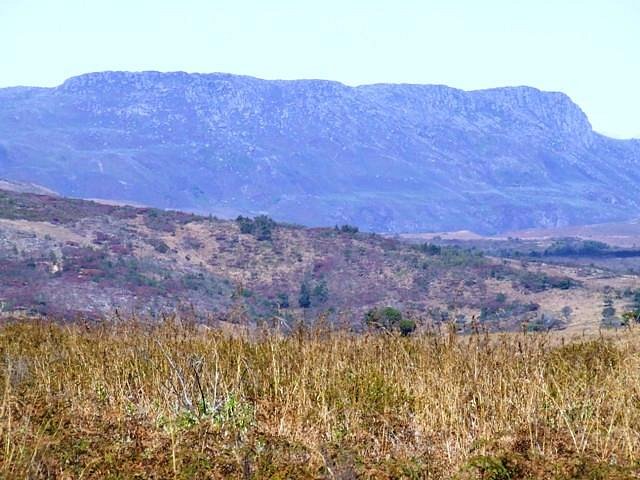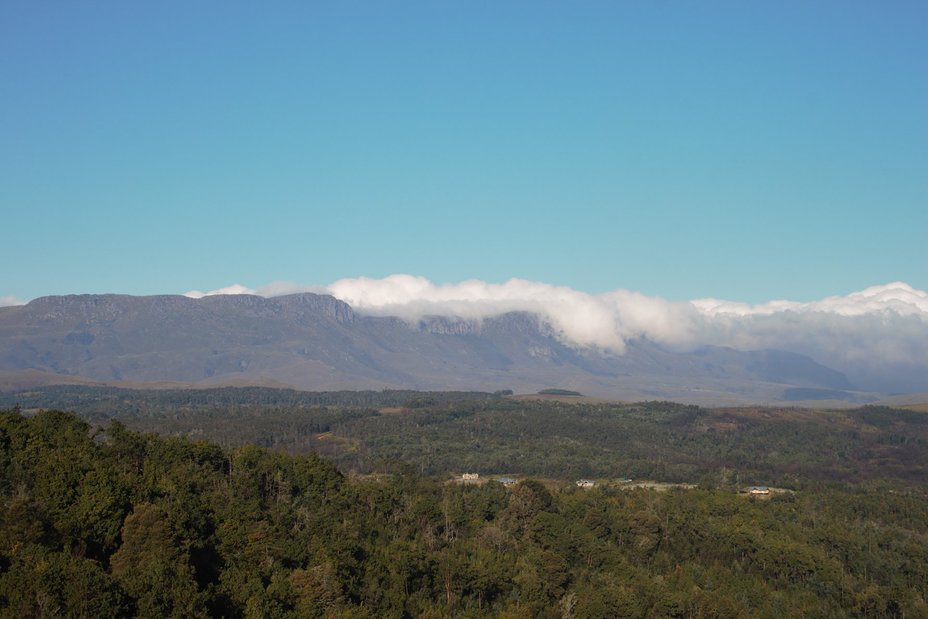
Mount Nyangani
Mount Nyangani or Mount Inyangani is famous for many reasons. Nevertheless, it is mostly famous for being the tallest mountain in Zimbabwe. Mount Nyangani is a major tourist destination in the country and draws thousands of domestic and international travelers throughout the year.
Mount Nyangani is situated in Nyanga National Park, which is in Nyanga Province. The mountain is located at a distance of around 170 miles or 275 km southeast of Harare, the Zimbabwean capital. The height of Mount Nyangani is 8,504 feet (2,592 m). The peak of the mountain is located on top of a little projection of stone about 40 m over the bordering region. Flora on the mountain mostly consists of heaths, evergreen trees, and grassland. Precipitation in this area is quite high (approximately 2,200 mm every year) but extensive periods of arid climate take place throughout the winter season of May to August. Because of the comparatively low elevation and humid climate, snowfall is quite scarce in this area. The last snowfall was registered in the month of August 1935.
Geology
Mount Nyangani is made up of an upper ledge of sandstone and dolerite, with the tougher dolerite creating ridges and cliffs. The dolerite ridge and the deposits below it are possibly component of the Umkondo category. The Umkondo Category dolerite ridge on the Kwaraguza Road, north of Nyangani, has been chronicled at 1099 Ma.
How can you reach Mount Nyangani?
You can reach Mount Nyangani from four base points located in Nyanga National Park and they are as follows:
- The Mountain Club of Zimbabwe shed on the Kwaraguza Road. You can reach this point through Circular Drive.
- The official vehicle parking lot at the foot of the Tourist Route. You can access this point via Circular Drive.
- Gleneagles Substation of Nyanga National Park. You can reach this point via Kwaraguza Road, the Circular Drive, and the Gleneagles Road or from Troutbeck through Nyafaru.
- Nyazengu Substation of Nyanga National Park. You can reach this point through a road, which moves southward from just in front of the official vehicle parking area.
Mountain Hikes
If you have average level of fitness, then you can attain the summit within a period of 1–3 hours. This climb takes the hiker to an elevation of approximately 2,200 meters and the rest is generally walking over the more moderate slopes of the peak tableland. The risks here are posed by confusingly quick climate changes that can convert from bright skies to dense fog, and under these circumstances, many casualties have taken place because of hikers mislaying their route and tripping over narrow and steep valleys. There are three slopes that conform to tracks:
- The principal approach path to the mountain is a Tourist Path from the west. This climbs up by the boundary of the upper Nyamuziwa river and passes over onto the main highland north of the peak. From that area, it moves southward over the tableland to the peak.
- A second route is available from the Mountain Club of Zimbabwe shed. This trail goes by the eastern slope of the northern crest, prior to meeting the Tourist Path on the principal highland.
- A third route starts from Nyazengu, southwest of the Mount Nyangani on the old path to the Pungwe River boardwalk (Pungwe Drift). The route ramifies from the Nyazengu Trail and moves up to the foot of Tucker’s Gap that offers a stunning sight of the montane tropical forest to the southeast of the Mount Nyangani (during the particular periods when the fog does not hide the Gap). You can climb the northern slope of the gap (marked trail) and subsequently walk towards the north over a rocky area to the principal highland, arriving at the peak from the south. Nevertheless, this final approach has no trail or marks.
You can also climb the mountain by utilizing the paths given below, which don’t have any trails or marks:
- The north-eastern edge, between the Kairezi and Nyama Rivers. This path begins from the Gleneages Road, amid the Kairezi and Nyama walkways, and goes after an edge up to the principal tableland, northeast to the peak and east of the Tourist Path.
- Through Little Nyangani – This itinerary begins from Gleneagles Substation, and climbs the profoundly wooded gradient of Little Nyangani Mountain, which is located on the east side of the principal highland. From Little Nyangani, you can climb west to a tropical forest-covered ridge, then climb west on top of the principal highland through Kairezi Falls, arriving at the principal tableland east of the peak.
The routes mentioned above are all hikes, which involve a number of difficulties but don’t require any mountaineering skills. Nevertheless, you should stay circumspect and prudent, particularly on unmarked trails, since the climate conditions may vary quite fast: fog can lead to visibility of lower than 50 meters. It may well be the reason for many casualties and losses on the mountain, like that of two young kids of the erstwhile Finance Minister of Zimbabwe, Tichaendepi Masaya.

Rivers and Waterfalls on Mount Nyangani
Mount Nyangani is the origin of three rivers and they are as follows:
- The Kairezi (Gairezi) River
- The Nyamuziwa River
- The Pungwe River.
The Kairezi (Gairezi) River and The Nyamuziwa River are confluents of the Mazowe River, which itself is a branch of the Zambezi River.
The Nyama River, a confluent of the Kayirezi, plunges from the principal tableland in a waterfall on the northeast side of the mountain. The Kairezi Falls are situated on the eastern border of the principal highland.
Fauna of Mount Nyangani
The fauna of the region is characteristic of the wildlife species found in Nyanga National Park. Given below are some further details:
- The Inyangani River Frog is an imperiled amphibian, which has been named after the mountain. You will see it in stony, fast-moving watercourses in the montane grassland.
- You will find the clawless otter in the upper Kairezi River, close to the Mount Nyangani
Archaeology
Iron Age remains have been discovered on Little Nyangani and on a hill to the west of the peak, the latter was better maintained, but not on the peak tableland itself.
